Rob Diaz de Villegas WFSU-TV
With the In the Grass, On the Reef documentary done, me, my wife Amy, and our son Maximus took a vacation to visit Amy’s family in Duxbury Beach, Massachusetts. We were picked up at the airport by her cousin, Jim Kennedy. On the ride down, we got to talking about what our respective plans were for the week. One thing he was wanting to do grabbed my attention. He was going to go clamming for quahogs in the marsh by the family’s vacation home and make a chowder. That sounded so cool to me. Go into a marsh without having to lug around a camera, and round up some tasty critters? I told him I wanted to go (I did go into the marsh with a camera last year, which is where the marsh pics you see originated). It’s a strange side effect of working on this project that I now enjoy going into hot, muddy places surrounded by sharp grass.
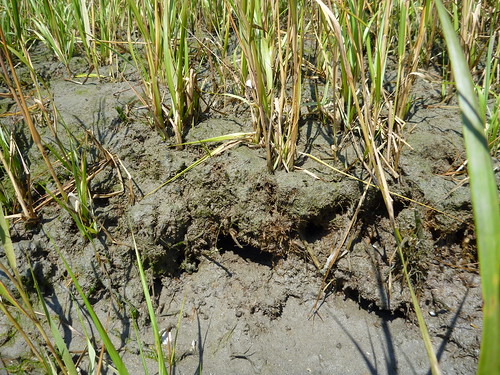 Low tide was set for 11 AM on the day we chose to go, so we set out between 9:30 and 10 while the tide was still going out. The marsh is at the mouth of the Back River, and when the tide drops, the grass stands a few feet above the bottom of the river bed. Below the cordgrass, the sides of the elevated marsh are pockmarked by fiddler crab burrows. We entered the sand/ mud flats at the head of the river from Gurnet Road, armed with our permit, a rake, and a 12-quart bucket. The quahogs would be buried just below the mucky surface. Here on the Forgotten Coast, we have quahogs as well- ours are the southern quahogs, the more famous New England quahogs are known as the northern quahog:
Low tide was set for 11 AM on the day we chose to go, so we set out between 9:30 and 10 while the tide was still going out. The marsh is at the mouth of the Back River, and when the tide drops, the grass stands a few feet above the bottom of the river bed. Below the cordgrass, the sides of the elevated marsh are pockmarked by fiddler crab burrows. We entered the sand/ mud flats at the head of the river from Gurnet Road, armed with our permit, a rake, and a 12-quart bucket. The quahogs would be buried just below the mucky surface. Here on the Forgotten Coast, we have quahogs as well- ours are the southern quahogs, the more famous New England quahogs are known as the northern quahog:
There were a lot of people out there harvesting the clams. Most of them used a short rake meant specifically for clamming. Jim went to several stores to look for one but couldn’t find it, so we used a garden rake. At the end of the day, though, the best tools we had were our own feet. A mature, legal sized quahog (3-4 years old) is big enough that we could feel them under our feet as we walked up the river bed. Then, with the rake or with our hands, we would dig them out. Around every legal sized clam we found there were usually several smaller ones. I thought back to what David said in the show about what he looked for in an oyster reef. The best ones had several mature oysters as well as several smaller ones to eventually replace them.
I couldn’t help but note the differences and commonalities between our local marshes and sand flats and this New England marsh. I didn’t see many large predatory snails in or around the marsh, a stark contrast to sand flats in St. Joseph Bay or at Bay Mouth Bar.
Blue crabs are of course common on Florida coasts, but their historic range ends just to the south of here, on the outer coasts of Cape Cod. I believe this mud covered crab is an invasive green crab, and I have seen Atlantic rock crabs on the nearby beach. There were razor clams (Ensis directus) and steamers (soft shell clams, Mya arenaria), each of which are harvested at other times of the year. We also saw the occasional small shrimp, and oysters that had flaked off of reefs deeper out in the bay.
We caught the legal limit and returned, muddied, to prepare the chowder.
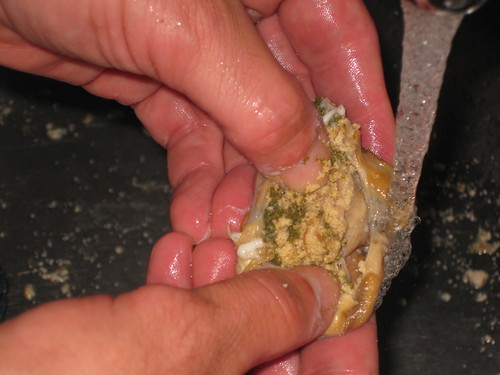 A little on how you prepare quahogs for chowder:
A little on how you prepare quahogs for chowder:
You scrub the mud off of the closed shells. Open shells buried in the mud are dead animals and are unsafe for consumption.
After scrubbing them, you boil them until they open. Then you shuck them and remove the contents of their stomachs. In the photo at the lower left of this paragraph, that green stuff is phytoplankton- microscopic plants floating with the other sediment in the water. Good food for clams- and their filtering it is a great way to keep the water clean- but not anything we were interested in eating.
I got to try my hand shucking and cleaning the clams. Jim’s mom, Pam, cut potatoes and onions while Jim cooked the quahogs and fried some bacon. The bacon smell helped with the boiling clam smell. The ingredients would come together in a large pot with milk, cream, and flour. The making of the chowder in the cottage brought out some nostalgia.
Pam recalled that her grandmother’s chowder didn’t contain dairy. When Bertha and Archer MacFarland would camp on Duxbury Beach, they didn’t have refrigeration and so milk and cream weren’t really an option.
 “When Max is old enough,” My father-in-law, Chris MacFarland, said to me, “you need to teach him how to go quahogging to keep the tradition going.” Maximus is five months old, so I have a bit of time until I take him out there. When he does go, he’ll represent the fifth generation of the MacFarland family to harvest quahogs from Duxbury Bay.
“When Max is old enough,” My father-in-law, Chris MacFarland, said to me, “you need to teach him how to go quahogging to keep the tradition going.” Maximus is five months old, so I have a bit of time until I take him out there. When he does go, he’ll represent the fifth generation of the MacFarland family to harvest quahogs from Duxbury Bay.
Duxbury Beach and Duxbury Bay are separated by Gurnet Point, a thin cape down which Gurnet Road runs. The road runs to the town of Saquish at the horn of the cape. Driving there, the beach is on your left, and the bay is to the right. A large marsh is at the North of the bay.
Archer and Bertha started camping on Duxbury Beach around 1920. After some years of camping there, they bought plots of land and built a cottage by the marsh. When their son Robert was sixteen, he built another house nearby. Then, when he was nineteen, he sold his car for $200 to buy a plot. There he built the house where his children, and their children and grandchildren, vacation every summer.
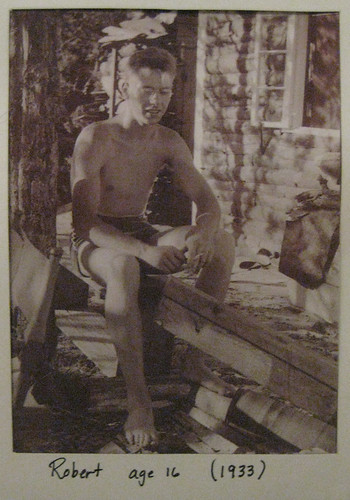 Robert took his children looking for quahogs when they were young. They used the “treading” method to find their clams, much like we did, except that they were barefoot. Jim and I wore shoes to keep our feet safe from broken shells hidden in soft mud that was deep in places. It was deeper as we walked up the riverbed- I sank almost up to my waist at one point. I imagine that they didn’t walk that far up.
Robert took his children looking for quahogs when they were young. They used the “treading” method to find their clams, much like we did, except that they were barefoot. Jim and I wore shoes to keep our feet safe from broken shells hidden in soft mud that was deep in places. It was deeper as we walked up the riverbed- I sank almost up to my waist at one point. I imagine that they didn’t walk that far up.
Robert also fixed up an old pram, on which he used to take his sons Chris and Doug on fishing trips off of the beach. As Chris (who was 7) and Doug (who was 5) recalled, one of them would row, the other would bail water. They caught cod, threw back pollock and perch, and used mackerel for bait. Of course, North Atlantic cod is not nearly as common as it once was. Nor is flounder as common off of Saquish. Jim remembers going out with his family and spotting them at the edge of seagrass beds from the family’s Boston Whaler. For about ten years now, those haven’t been seen much either. As David points out in the program, the animals in the lower trophic levels see less change over time, and so there are still plenty of clams in Duxbury Bay.
Hopefully that means chowder at the cottage for many more summers.
When the chowder was done, it was served with oyster crackers and crumbled bacon (the bacon Jim made earlier- the grease was used in the chowder).
I’m guessing there are stories like this across the Forgotten Coast: generations of families bonding while they made use of the fish and shellfish swimming outside their back doors. Do you have a story like this? Share it here, in the comments section. We might want to visit some of you and feature your stories in one of our videos.
Photos taken by: Rob Diaz de Villegas, Chris MacFarland, James Kennedy, and Amy Diaz de Villegas. Archival photos provided by Chris MacFarland.



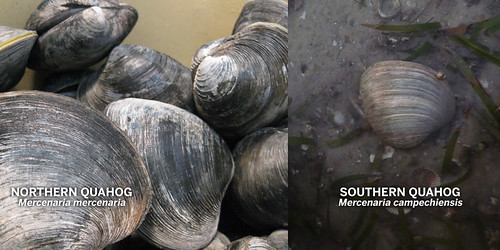
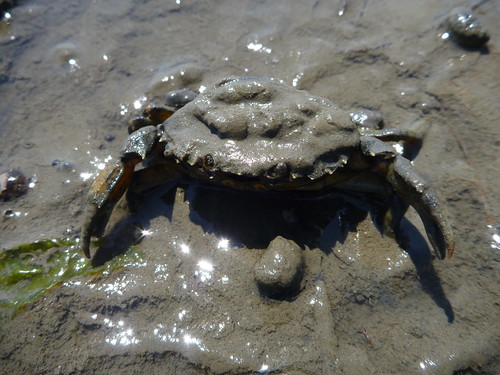
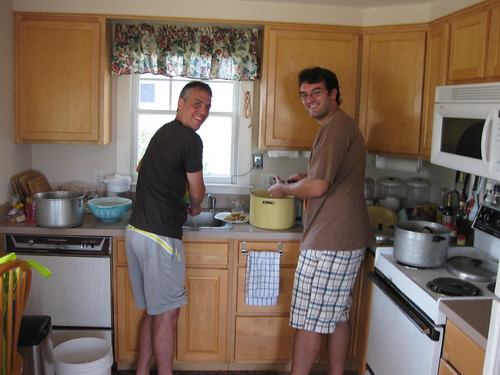
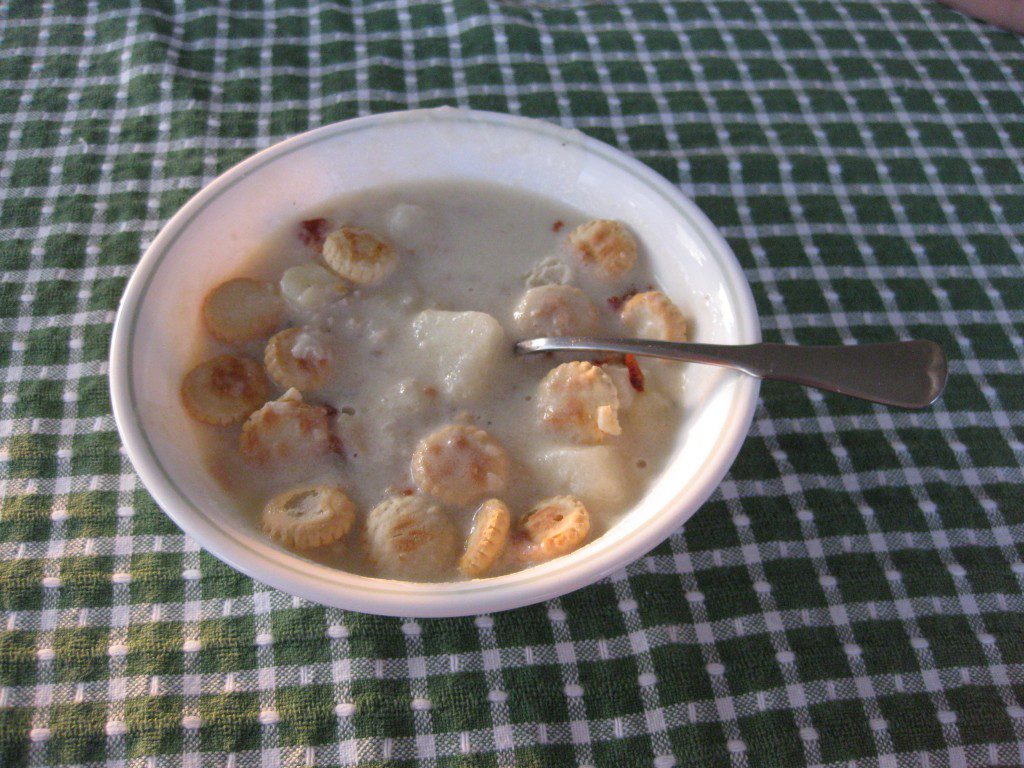
2 comments
Finding clams with your feet reminds me of finding scallops with my feet on the bay mouth bar, on the Turkey Point Flats, off St James, FL and in StJoe Bayin years past.
It’s interesting that you mention St. Joe Bay, when I was out there I was thinking about how it is out there during scallop season. I guess I’ll think about it a little more when I walk over hard bumps in the sand out there, and what I might be stepping on.
Comments are closed.